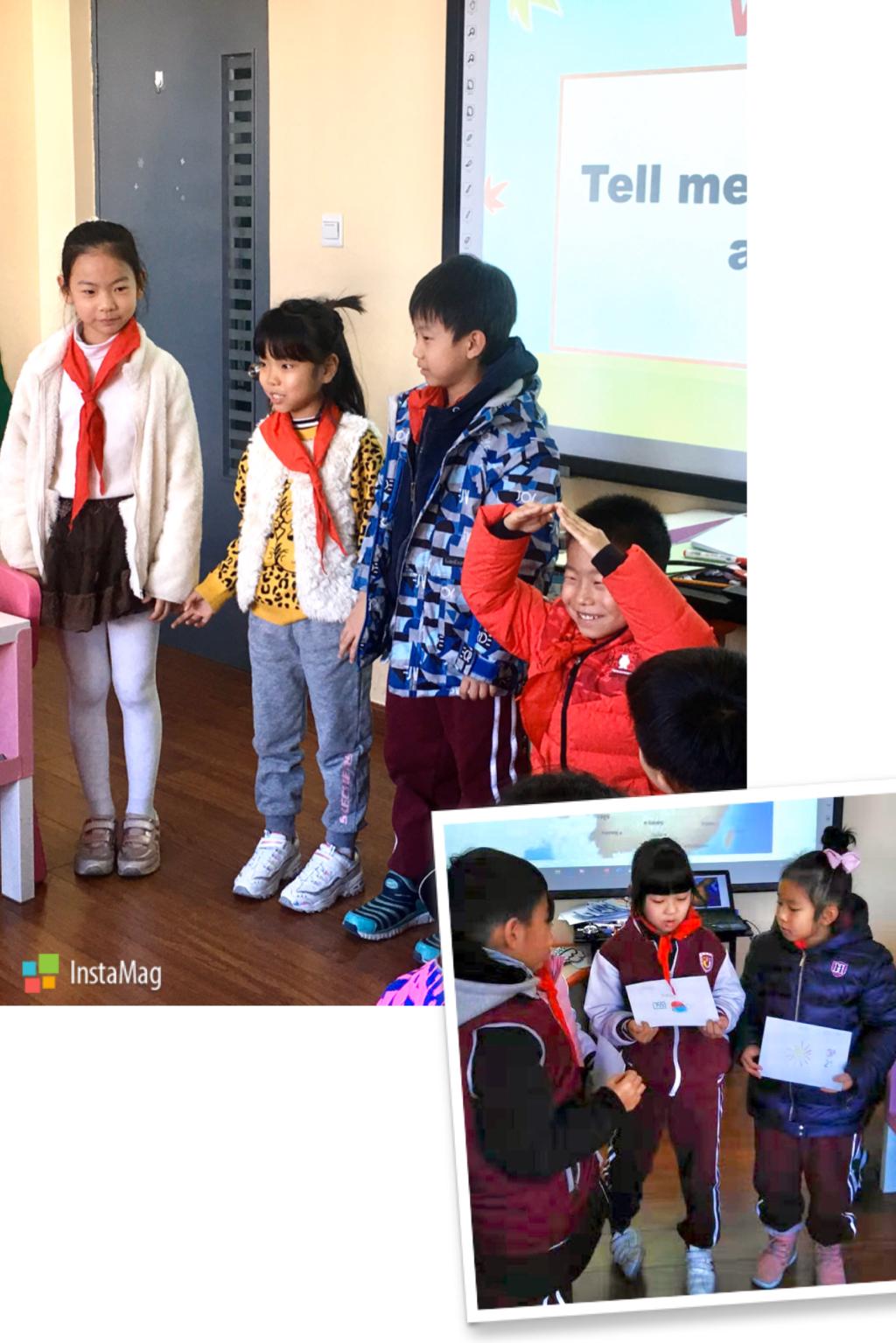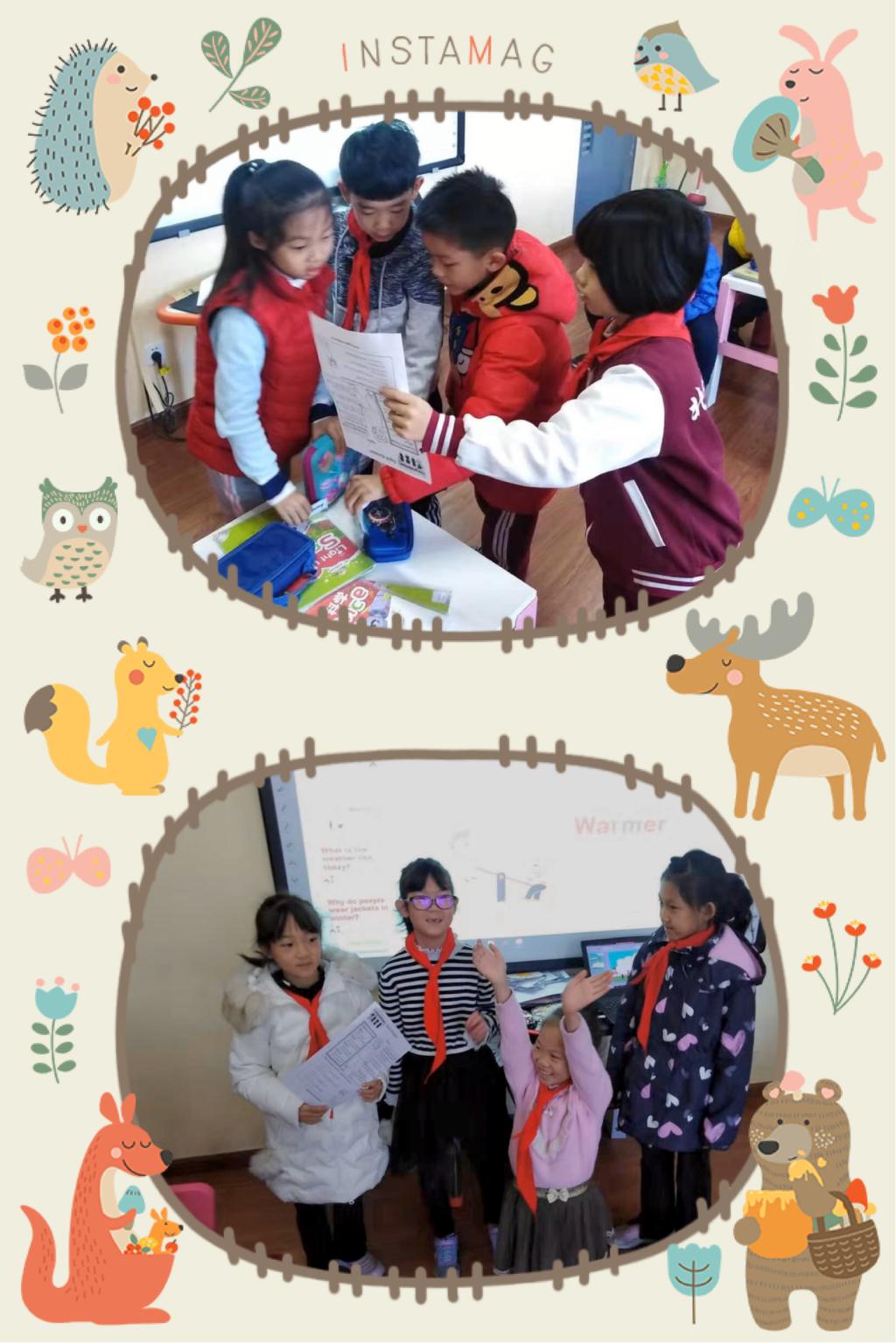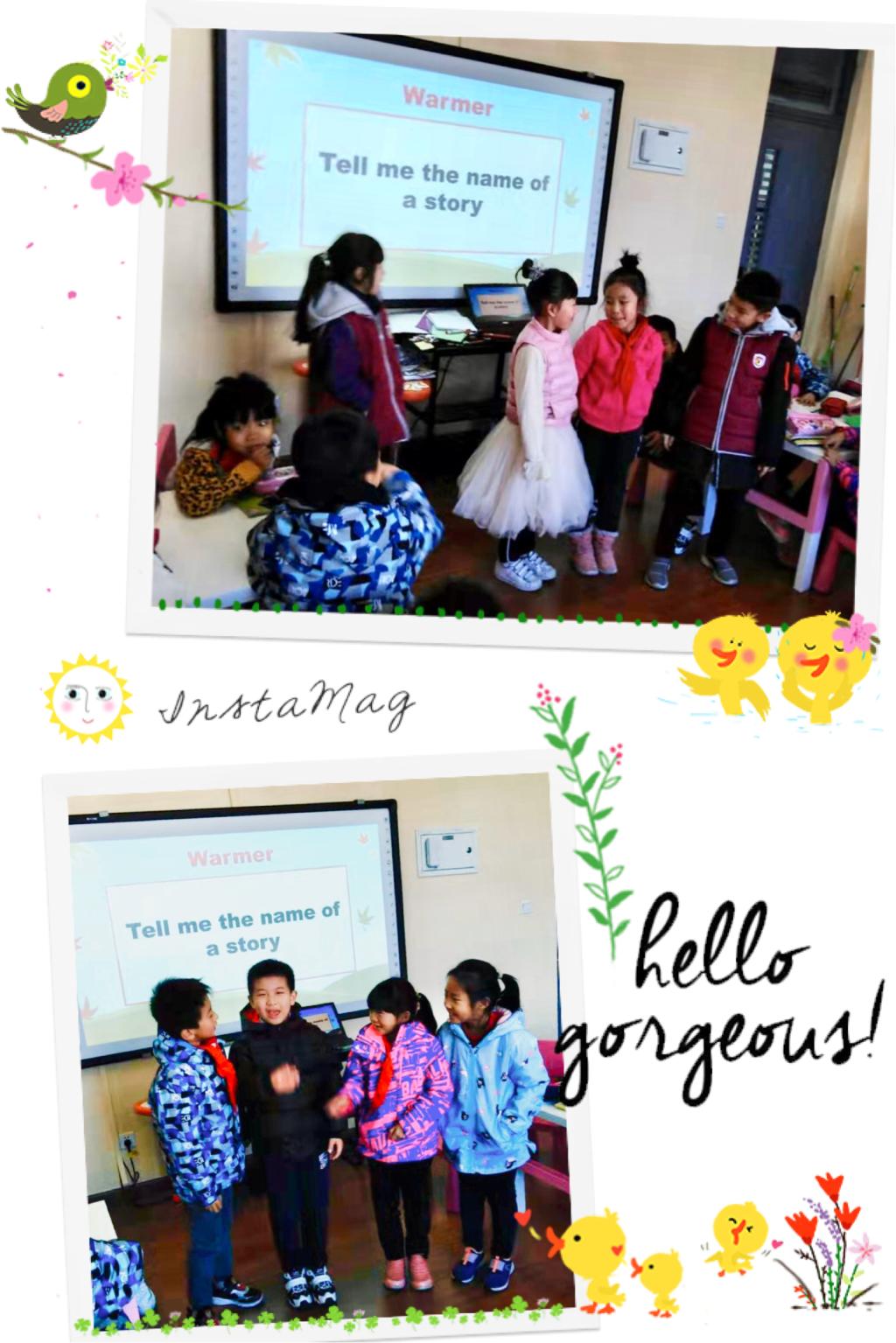英文故事創(chuàng)作與表演——小學(xué)高端英語項(xiàng)目組系列報(bào)道之外教實(shí)踐課課堂風(fēng)采
發(fā)布日期:2020-01-06 信息來源:小學(xué)高端英語教育項(xiàng)目組
本月,二年級(jí)雙語科學(xué)的外教Robert帶領(lǐng)學(xué)生們開展了一節(jié)故事創(chuàng)作和表演的活動(dòng)課,。孩子們需要抽取卡片,,用卡片上指定的故事開頭和人物編寫一個(gè)故事,然后以話劇的形式表演出來,。本節(jié)課旨在鍛煉孩子們的口語表達(dá)能力,,同時(shí)也培養(yǎng)他們的想象力和創(chuàng)造力。
We led a class where the students wrote their own stories. The students made stories using the ‘beginning’ and ‘character’ cards that we made. Once they had made a story with these, they performed their stories to the class with one person being a narrator. This allowed students to practice their English and use their creativity and imagination to make a story of their own.

首先,,在課堂導(dǎo)入環(huán)節(jié),,我們要求學(xué)生們充分回憶和思考他們所熟知的英文童話故事情節(jié),然后列出所有這些故事的名稱,,以此為本節(jié)課的內(nèi)容打下了基礎(chǔ),。在整個(gè)思考和羅列的過程中,可以看出孩子們的閱讀量非??捎^,,知識(shí)面也很廣。
At the start of the lesson, we asked students to recall the names of the English language stories that they had read. This helped students to think about the stories they had read and provided a context for the lesson.
然后,,我們引入了和這堂課主題相關(guān)的一些新詞匯,,比如,“故事情節(jié)”,、“故事開端”,、“故事結(jié)局”、“角色”等,。這些詞匯幫助孩子們認(rèn)識(shí)到,,創(chuàng)作一個(gè)故事需要哪些必要的元素。我們以一則簡(jiǎn)短的故事為例,,告訴孩子們,,在這個(gè)故事里,哪部分屬于故事開端,、哪部分是結(jié)尾,、故事的情節(jié)以及人物分別是什么,以此讓孩子們對(duì)于這些必備元素有一個(gè)更清晰的概念,,也幫助他們更好地完成接下來的故事創(chuàng)作,。
We taught the students some new vocabulary, such as the ‘plot’, ‘beginning’, ‘happens’, ‘ending’ and ‘characters’. This gave students the necessary vocabulary to identify these important elements of the story. After explaining these characters and beginning cards to students, we then gave them an example made using the cards. We asked the students to tell us the characters, beginning, ending and plot of the story. This helped the students identify these main features of a story and then help them make their own.
接下來就到了本節(jié)課的重點(diǎn)——小組故事創(chuàng)作環(huán)節(jié)了,。每個(gè)小組會(huì)隨機(jī)分到一些卡片,其中一張卡片上寫有兩句話,,作為指定的故事開頭,,剩下的卡片上則是給定的故事角色。小組成員們拿到了卡片后,,先選定各自想扮演的角色,,然后開始根據(jù)給定的故事開頭,發(fā)散思維,,創(chuàng)作故事,。孩子們可以在編故事的過程中,試著表演自己的角色,。表演不僅適于孩子們好動(dòng)的天性,、激發(fā)他們的靈感,也能具象化他們正在創(chuàng)作的故事,。
The students got together in teams and made their own stories. The cards had the advantage of being a platform to help the students make a story. Some students chose to act out the actions of their characters with other characters while making the story. This helped them visualize the story, while helping kinaesthetic and kinetic learners in the class.

故事創(chuàng)作完成后,,我們要求孩子們寫下各個(gè)角色的臺(tái)詞,之后就要開始表演啦,。孩子們通過講述故事以及背誦對(duì)白的方式來練習(xí)英語口語,。他們對(duì)戲劇表演非常有熱情,爭(zhēng)先恐后地想要走上“舞臺(tái)”,。每個(gè)小組編寫的故事非常生動(dòng)有趣,,展現(xiàn)了非凡的想象力與創(chuàng)造力,令人驚嘆,。同時(shí),,每個(gè)孩子的表演都活力四射,極具感染力,。
They then wrote down the story and performed it to the class. This allowed the students to practice their English both narrating the story and by reciting the characters’ dialogue. The students enjoyed the active drama and role-playing element and were strongly engaged by the activity.There were many brilliant performances. This drama element helped students practice their English while moving around and performing their characters’ actions.
這節(jié)故事創(chuàng)作課不僅鍛煉了學(xué)生們的英語口語,,也讓孩子們對(duì)于故事必備的元素有了基本的概念。在這堂課上,,孩子們活潑而專注,,用于自我表達(dá),充分解放自己的藝術(shù)創(chuàng)作天性,。未來,,外教Robert也將帶給他們更多精彩而創(chuàng)新的實(shí)踐課,讓他們收獲知識(shí),、創(chuàng)意與成長(zhǎng),。
This activity not only allowed students to practice their English, but also identify and understand the various elements of a story.

(供稿:小學(xué)高端英語項(xiàng)目組)
熱點(diǎn)新聞
-
2024-05-24
北外附校邀請(qǐng)北外專家舉行高中學(xué)生法制講座
-
2023-12-26
【明德講堂】弘揚(yáng)外交精神 傳播外交智慧---外交官張國(guó)斌為北外附校初一年級(jí)師生做主題講座
-
2023-12-14
揚(yáng)復(fù)語優(yōu)勢(shì) 促多元發(fā)展│北外附校舉辦2023年第二場(chǎng)校長(zhǎng)午餐會(huì)
-
2023-11-17
【初中·教育教學(xué)】“會(huì)”診學(xué)業(yè)質(zhì)量 賦能學(xué)生成長(zhǎng)
-
2022-05-30
小學(xué)教育簡(jiǎn)介(2022年5月版)




